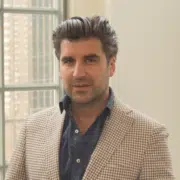shifting dynamics of our global order from a North American, Southeast Asian and European perspective. This was the third and final event in a three-part series called ‘The Hague Strategic Foresight Forum Talks’. The third event was titled ‘The Future World Order.’ Check out the event recap here.
Curious what the first and second Strategic Foresight events were like?
Take a look at write-ups from the first and second events.
Check out the interviews conducted from the first and second events.
In our second event, experts concluded that inequality lies at the heart of rising global tensions. The recent re-election of Donald Trump, running on the ‘America First’ platform, means this message will most likely be placed on the back burner, with strategic competition between the US and China taking centre stage.
Key questions that were explored by our foresight experts included:
To what extent will the US and China try to shape this future world order? Will Europe be a player in or a playground for great power competition? Should multilateral institutions such as the UN reinvent themselves to stay relevant?
Historically, international orders have served as guardrails, preventing tensions from escalating into conflict. The absence of such an order risks uncertainty and chaos—an outcome history has shown to be devastating. With more than 75 years of continuity, the current system faces growing scrutiny, and its legitimacy is increasingly challenged. Yet, our speakers underscored a key point: a flawed order remains preferable to no order at all. The challenge lies in crafting an alternative while addressing both historical grievances and emerging geopolitical pressures.
The changing nature of the world order requires states to adapt as well. As normative concepts such as free trade and democracy are placed on the backburner, competition takes centre stage. The 2024 Draghi report stressed that the EU should utilise all levers of power to increase its innovation and competitiveness or risk falling behind and becoming a secondary player in global affairs. While a clear understanding of today’s challenges and the desired end goal seem to be emerging, the path forward remains uncertain.
This write-up of the third event offers perspectives on the flaws and merits of the current order and lays out the contours of the future global order from American, Asian and European experts. It concludes with a set of key takeaways offered by the participants.






